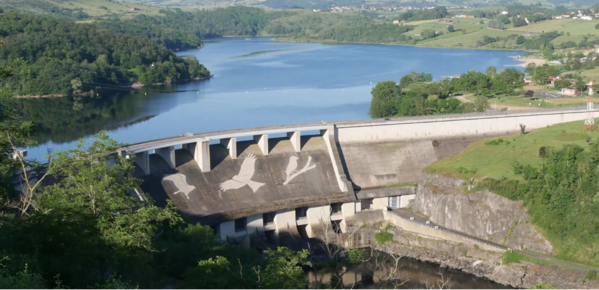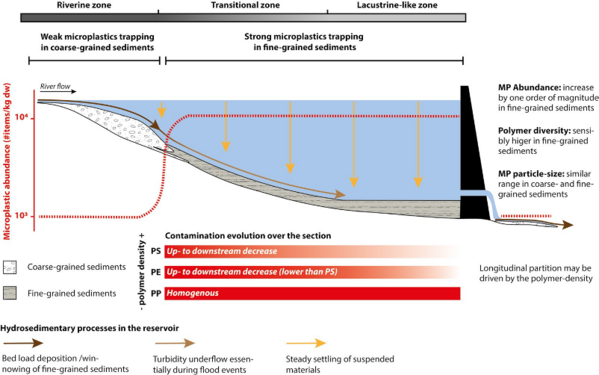Dam sediments: traps for microplastics

Large reservoirs deeply disturb the functioning of rivers. These infrastructures favour the deposition of particles in suspension in the watercourses, thus creating favourable conditions for the accumulation of microplastics, particularly in the sedimentary stocks.
However, few studies have focused on this issue and microplastic pollution in reservoir sediments is still poorly understood.
In order to better understand the interception mechanisms of microplastics in reservoir sediments, researchers from GERS-LEE (Gustave Eiffel University), GeHCO(University of Tours) et LEHNA (UMR 5023 - CNRS, University Claude Bernard Lyon 1, Ecole Nationale des Travaux Publics de l’Etat) analyzed the evolution of contamination levels along the Villerest reservoir built on the Loire River.
This work is part of the ANR project Sedi-Plast (Coordinator: J. Gasperi) which aims to study the sedimentary contamination of the main metropolitan rivers.
This research shows microplastic levels of several tens of thousands of particles (larger than 25 µm) per kilogram of dry sediment in a 28 km stretch (just upstream of the dam), still under the influence of water level regulation. This area is conducive to the sedimentation of fine and/or low-density particles suspended in the water column.
Conversely, the upstream part of the reservoir (from 28 to 36 km upstream of the dam) corresponds to a delta zone formed by the accumulation of sand and gravel carried by the Loire. It is a section subject to alternating periods of flooding and exondation in connection with variations in water level.
These conditions are not conducive to the sedimentation of microplastics. Their content is an order of magnitude lower than in the part still under the influence of the dam. Over a few kilometers downstream of the dam, the sediment load is very degraded and mainly composed of coarse sediments. The microplastic content is similar to that of the delta.
The Villerest reservoir is located in an area where the sources of microplastic pollution are relatively limited and more than 50 km downstream from the St. Etienne agglomeration (which potentially represents a contamination hotspot). The high levels of microplastics found in the section still under the influence of the dam thus reveal the establishment of a zone of accumulation and preferential deposition on the scale of the Loire.
The management of the sedimentary stocks accumulated in the reservoirs constitutes a major issue for the operation of the reservoirs. This research contributes to the formulation of recommendations for a better consideration of microplastic contamination during management operations.
(copie 8)
REFERENCE
Microplastic trapping in dam reservoirs driven by complex hydrosedimentary processes (Villerest Reservoir, Loire River, France)
Elie Dhivert, Ngoc Nam Phuong, Brice Mourier, Cécile Grosbois, Johnny Gasperi
Water Research, vol. 225 (15 oct. 2022)
Contact : elie.dhivert@gmail.com - johnny.gasperi@univ-eiffel.fr
